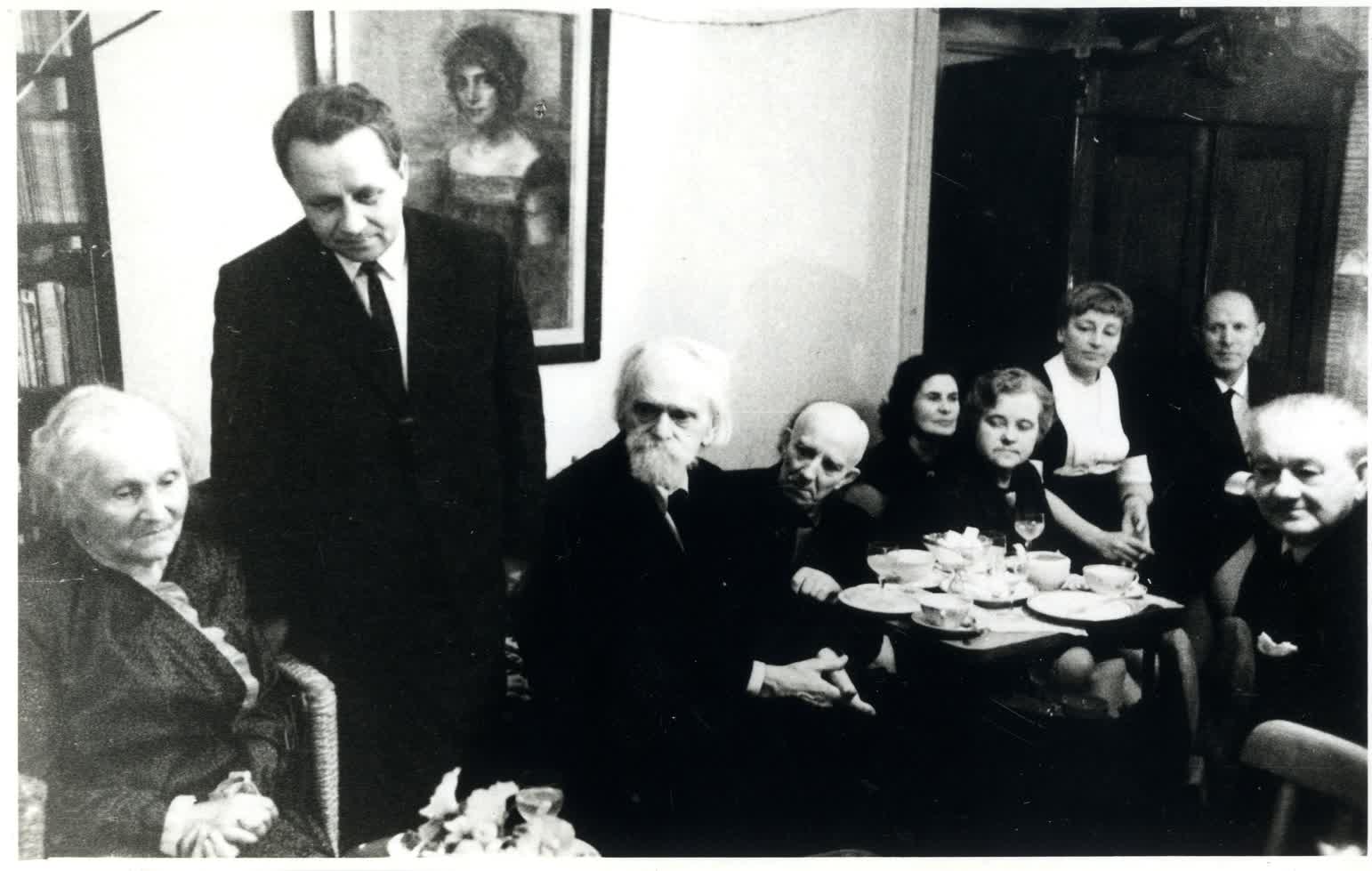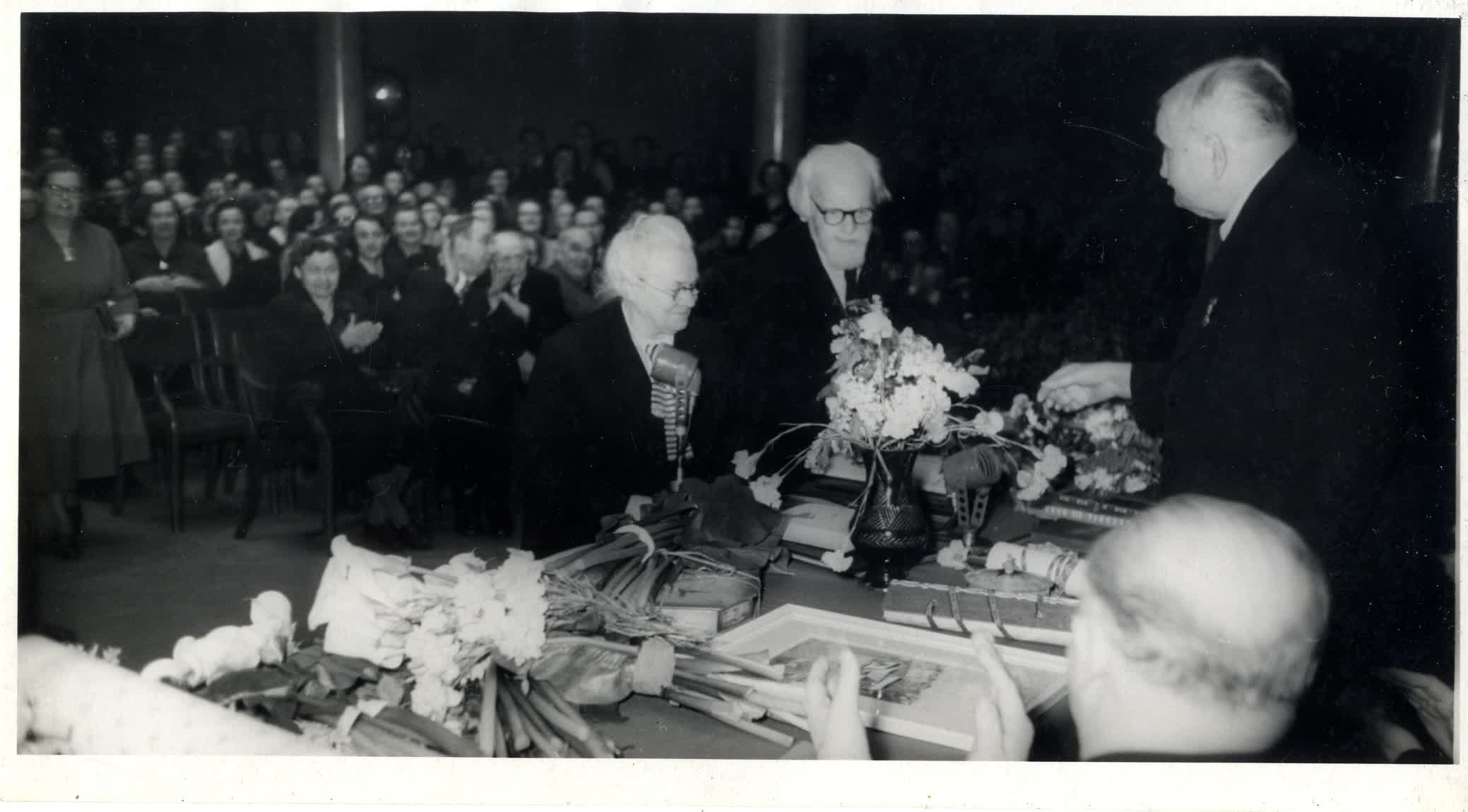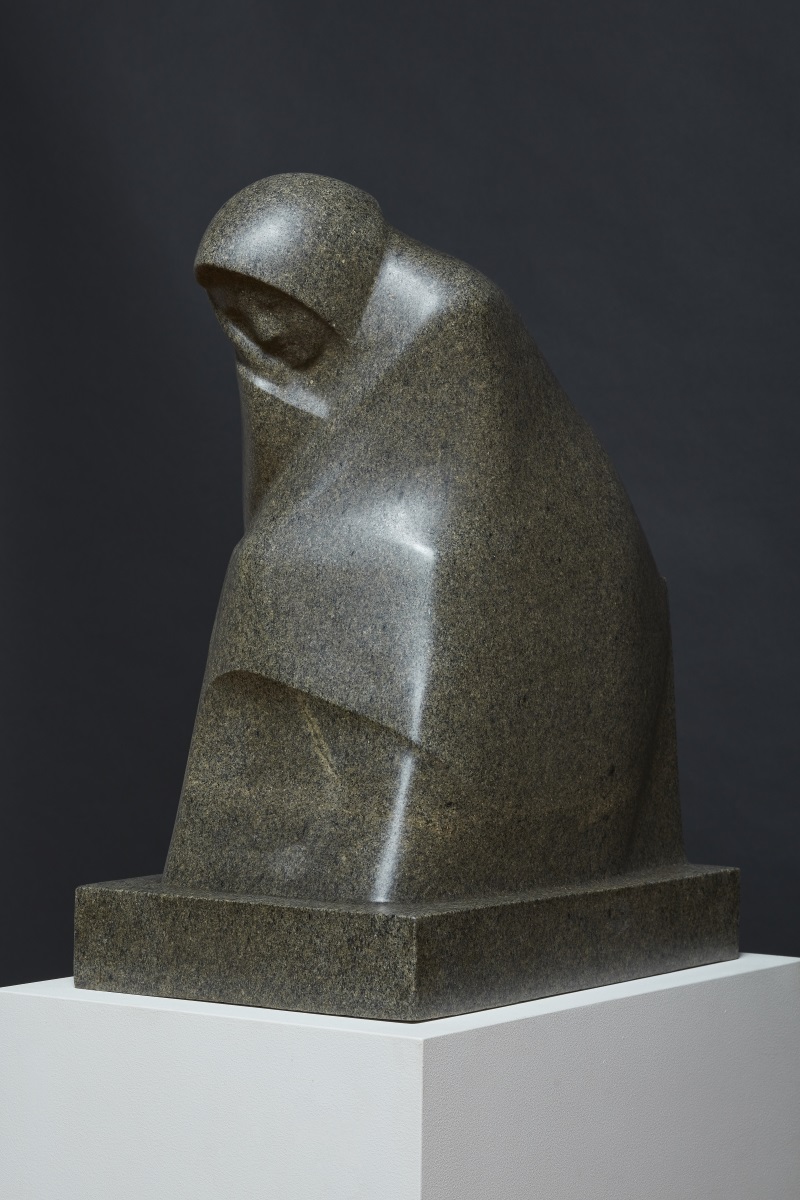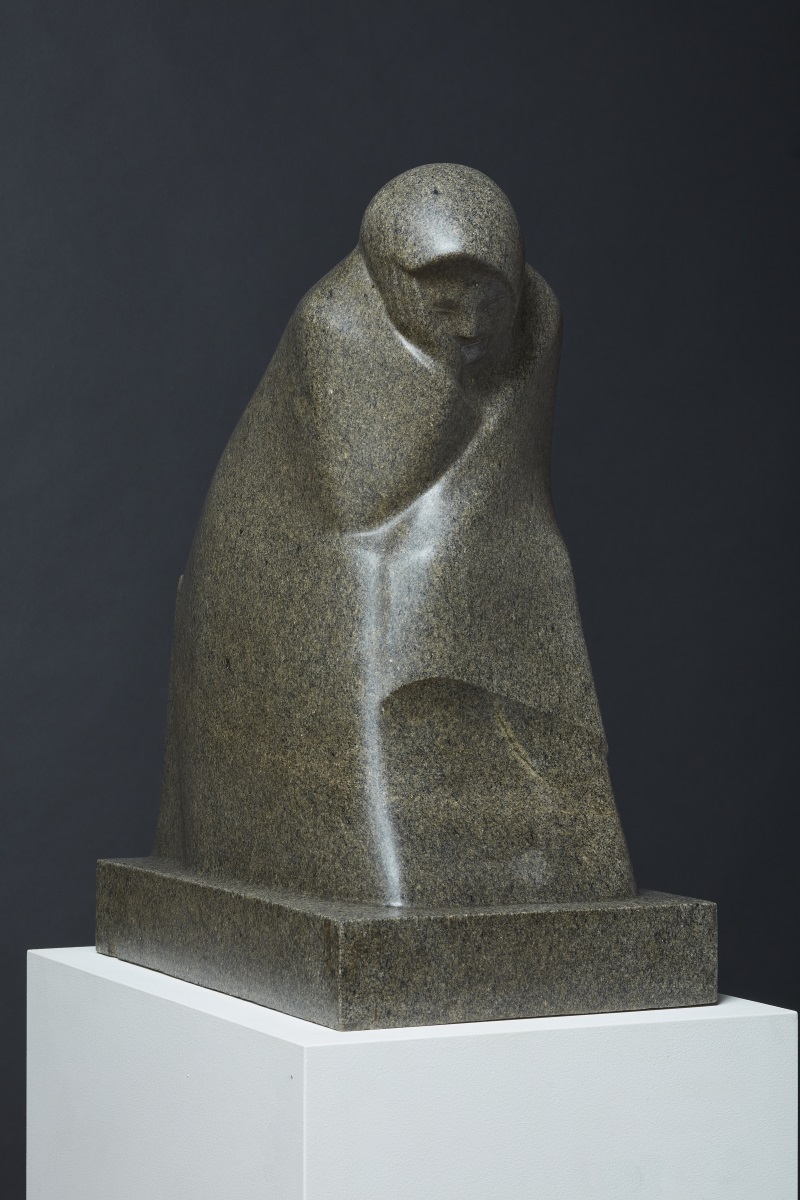The paradigmatic Latvian sculptor Teodors Zaļkalns’ style reached maturity with the creation of the figures of Latvian refugee women in the First World War, “Standing Mother” (Stāvošā māmiņa, 1915) and “Sitting Mother” (Sēdošā māmiņa, 1916–1923). In the words of writer and poet Edvarts Virza, they are “as Latvian as the sphinx is Egyptian”. At this time, Zaļkalns was living and working in St Petersburg but when the granite version of “Sitting Mother” was made, he had returned to a newly independent Republic of Latvia where the arts were flourishing.
The Mother figures portray fortitude and stoicism, which the Latvian people came to rely on for survival in conditions of war. The figures are both protective and seeking protection, embodiments of civic responsibility and communion. Zaļkalns was looking for a clear, simple, and unified form, building it architecturally and rejecting any superfluous elements. The figure of the mother takes on the signification of house or home – a place to return to and take shelter in. Similar to ancient Egyptian sculptures, which were created so that the departed would find their way back, Zaļkalns’ Mother became a refuge for the tormented spirit of the people.
Zaļkalns studied at the St Petersburg Stieglitz State Academy of Art and Design (1893–1899), specializing in decorative painting and etching. In 1899 he took the opportunity to study abroad in Paris, briefly working in Auguste Rodin’s studio. He was much taken with the work of the great sculptor and it is here Zaļkalns found his own vocation. This influence can be seen in his early work which carries many traits of Rodin’s style, such as an expressive and painterly surface, and an emphasis on the emotional state of the subject. In Paris, he was likewise exposed to the Egyptian sculptural figures at the Louvre, whose influence can perhaps be detected in the later work, particularly in “Sitting Mother”, which marks a shift in his style. He was no longer looking for inspiration from others, instead honing in on the subject in order to crystalize what he perceived to be the essence.
After living and working in St Petersburg, Yekaterinburg, and Florence, Zaļkalns returned to his native Latvia. During his time abroad, he had remained involved and active in Latvian cultural life, participating in every national art exhibition. Between 1944–1958, Zaļkalns was professor and head of the sculpture department at the Art Academy of Latvia, inspiring several generations of artists. An essay written in 1947, and published in 1966 in the journal “Māksla” (Art) titled “The Sculpturally Significant”, laid out his conceptualization of the art. It constitutes one of the main branches of the Latvian sculptural tradition.
“Sitting Mother” bears a striking resemblance to the figure of the grieving mother in American Modernist dancer and choreographer Martha Graham’s iconic work “Lamentation” (1930), described in the program notes as “not the sorrow of a specific person, time or place but the personification of grief itself”. Likewise, Zaļkalns’ “Sitting Mother” was the personification of the stoicism and sorrow of the displaced. The Modernist project of the 20th century was a movement toward universalism and abstraction, an attempt at getting to the common by stripping away the particularities of the individual. “Sitting Mother” is a brilliant example of this ideal, both in Latvia and abroad. The simple heft of the sculpture is timeless, and to this day manifests a gravity of feeling that spans generations, encapsulating a nation’s struggle and persistence.
Agnese Cebere





